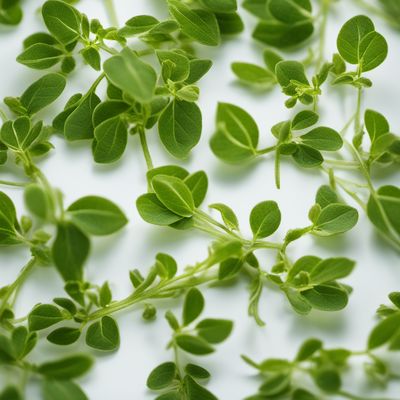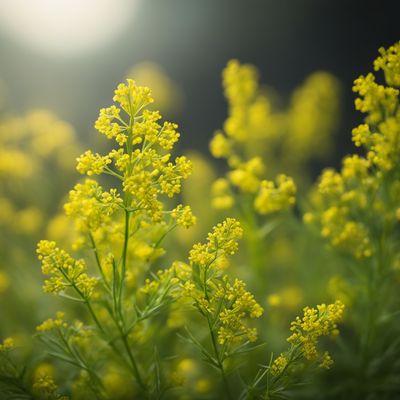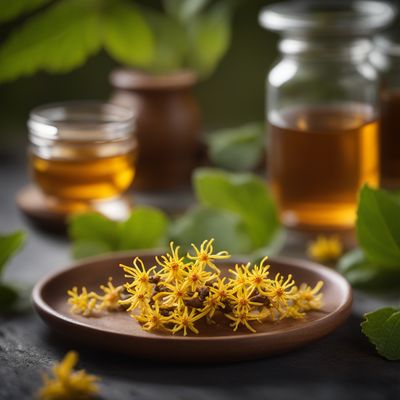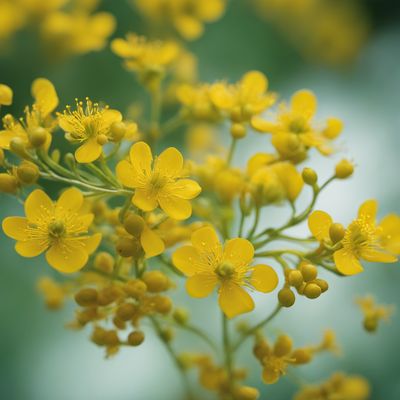
Ingredient
Sweet woodruff infusion leaves
Fragrant Elixir: Exploring the Delights of Sweet Woodruff Infusion Leaves
Sweet woodruff infusion leaves, also known as Galium odoratum, are small, delicate leaves with a vibrant green color and a distinct fragrance reminiscent of freshly mown hay and vanilla. These leaves have a soft, velvety texture and are often used to infuse beverages, desserts, and even savory dishes with their delightful aroma and subtle sweetness. When steeped in liquid, they release a refreshing and floral scent, making them a popular choice for herbal teas, cocktails, and syrups.
Origins and history
Sweet woodruff is native to Europe and has a rich historical background. It has been used for centuries in traditional European herbal medicine for its calming and digestive properties. In medieval times, sweet woodruff was also used to ward off evil spirits and was often strewn on the floors of churches and homes. Today, it is widely cultivated in gardens and is a beloved ingredient in European cuisines, particularly in Germany, where it is a key component of the famous May wine.
Nutritional information
Sweet woodruff infusion leaves are low in calories and are primarily used for their aromatic properties rather than their nutritional value.
Allergens
There are no known allergens associated with sweet woodruff infusion leaves.
How to select
When selecting sweet woodruff infusion leaves, look for fresh, vibrant green leaves that are free from browning or wilting. Avoid leaves that have a strong, unpleasant odor, as this may indicate that they are past their prime.
Storage recommendations
To maintain the freshness and quality of sweet woodruff infusion leaves, store them in a sealed container or plastic bag in the refrigerator. They can last for up to a week when stored properly.
How to produce
Sweet woodruff can be easily grown in a garden or in pots. It prefers partial shade and moist, well-drained soil. Plant the seeds or young plants in spring and ensure they are watered regularly. Harvest the leaves when they are at their peak freshness, usually in late spring or early summer.
Preparation tips
To use sweet woodruff infusion leaves, simply steep them in hot water or other liquids to extract their aromatic flavors. They can be used to infuse teas, syrups, creams, or even alcoholic beverages like gin or vodka. When using sweet woodruff infusion leaves in desserts, such as custards or ice creams, it is best to remove the leaves before serving to avoid any potential texture issues.
Culinary uses
Sweet woodruff infusion leaves are commonly used to flavor May wine, a traditional German beverage made by steeping the leaves in white wine and adding strawberries. They can also be used to infuse herbal teas, lemonades, or cocktails, adding a unique and refreshing twist to the beverages. Additionally, sweet woodruff infusion leaves can be incorporated into desserts like panna cotta, ice creams, or sorbets to infuse them with their delightful aroma and subtle sweetness.
Availability
Sweet woodruff infusion leaves are commonly available in Europe, particularly in Germany, where they are widely used in traditional recipes. They can also be found in specialty stores or online.
More ingredients from this category » Browse all

Centaury infusion leaves
The Healing Herb

Walnut infusion leaves
The Essence of Walnut Infusion Leaves

Shepherd’s purse infusion leaves
The Herbal Elixir of the Pastures

Eucalyptus infusion leaves
Refreshing Eucalyptus: Aromatic Leaves for Infusions

Tea tree infusion leaves
"The Healing Elixir: Unveiling the Power of Tea Tree Infusion Leaves"

Knotgrass infusion leaves
The Herbal Elixir: Knotgrass Infusion Leaves

Common speedwell infusion leaves
The Healing Power of Common Speedwell

Yellow bedstraw infusion leaves
The Golden Elixir: Unveiling the Secrets of Yellow Bedstraw Infusion Leaves

Witch hazel infusion leaves
The Natural Elixir: Unveiling the Power of Witch Hazel Infusion Leaves

Lime infusion leaves
Zesty Citrus Elixir: Unveiling the Magic of Lime Infusion Leaves

St. John´s Wort infusion leaves
"Nature's Sunshine: Exploring the Healing Powers of St. John's Wort Infusion Leaves"

Yarrow infusion leaves
The Herbal Elixir: Yarrow Infusion Leaves